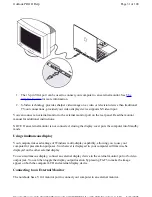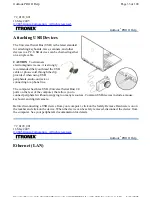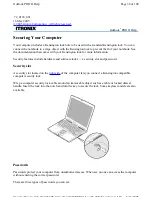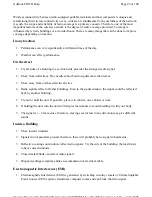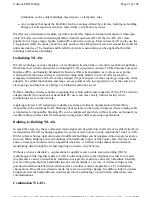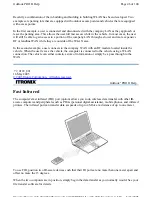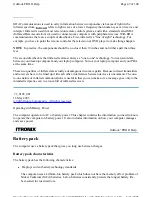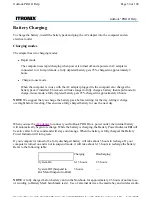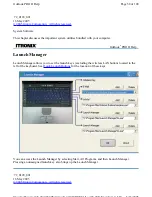
limitations, such as older buildings, leased space, or temporary sites
z
Any company that needs the flexibility and cost savings offered by wireless, building-to-building
bridge to avoid expensive trenches, leased lines, or right-of-way issues
WLANs use a transmission medium, just like wired LANs. Instead of using twisted-pair or fiber-optic
cable, WLANs use either infrared light (IR) or radio frequencies (RF). Of the two, RF is far more
popular for its longer-range, higher- bandwidth, and wider coverage. Most wireless LANs today use the
2.4-gigahertz (GHz) frequency band, the only portion of the RF spectrum reserved around the world for
unlicensed devices. The freedom and flexibility of wireless networking can be applied both within
buildings and between buildings.
In-Building WLANs
WLAN technology can take the place of a traditional wired network or extend its reach and capabilities.
Much like their wired counterparts, in-building WLAN equipment consists of USB, Personal Computer
Interface (PCI), and Industry-Standard Architecture (ISA) client adapters, as well as access points,
which perform functions similar to wired networking hubs. Similar to wired LANs for small or
temporary installations, a WLAN can be arranged in a peer-to-peer or ad hoc topology using only client
adapters. For added functionality and range, access points can be incorporated to act as the center of a
star topology and function as a bridge to an Ethernet network as well.
Within a building, wireless enables computing that is both mobile and connected. With a PC Card client
adapter installed in a notebook or hand-held PC, users can move freely within a facility while
maintaining access to the network.
Applying wireless LAN technology to desktop systems provides an organization with flexibility
impossible with a traditional LAN. Desktop client systems can be located in places where running cable
is impractical or impossible. Desktop PCs can be redeployed anywhere within a facility as frequently as
needed, making wireless ideal for temporary workgroups and fast-growing organizations.
Building-to-Building WLANs
In much the same way that a commercial radio signal can be picked up in all sorts of weather miles from
its transmitter, WLAN technology applies the power of radio waves to truly redefine the "local" in LAN.
With a wireless bridge, networks located in different buildings can be integrated into a single local-area
network. When bridging between buildings with traditional copper or fiber-optic cable, freeways, lakes,
and even local governments can be impassible obstacles. A wireless bridge makes them irrelevant,
transmitting data through the air and requiring no license or right of way.
Without a wireless alternative, organizations frequently resort to wide area networking (WAN)
technologies to link together separate LANs. Contracting with a local telephone provider for a leased
line presents a variety of drawbacks. Installation is typically expensive and rarely immediate. Monthly
fees are often quite high for bandwidth that by LAN standards is very low. A wireless bridge can be
purchased and then installed in an afternoon for a cost that is often comparable to a T1 installation
charge alone. Once the investment is made, there are no recurring charges. In addition, today's wireless
bridges provide the bandwidth one would expect from a technology rooted in data, rather than voice,
communications.
Combination WLANs
Page 45 of 100
GoBook PRO II Help
5/16/2005
file://C:\Documents%20and%20Settings\barvillj.ITRXNT1\Local%20Settings\Temp\~hh7...
Summary of Contents for GoBook PRO II
Page 1: ...Users Manual Model IX600 Itronix Corporation ...
Page 101: ...Page 100 of 100 ...

